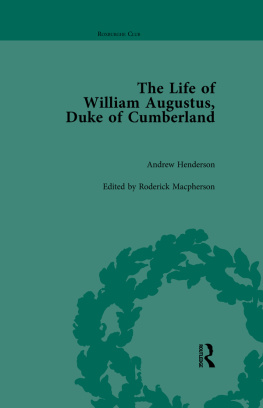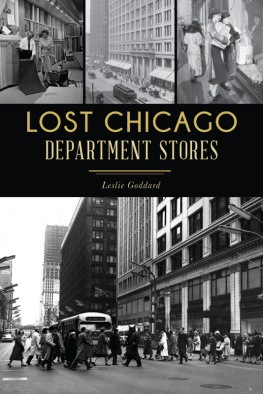ASIAN DEPARTMENT STORES
ConsumAsiaN Book Series
edited by
Brian Moeran and Lise Skov
The ConsumAsiaN book series examines the way in which things and ideas about things are consumed in Asia, the role of consumption in the formation of attitudes, experiences, lifestyles and social relations, and the way in which consumption relates to the broader cultures and societies of which it is a part. The series consists of both single-authored monographs and edited selections of essays, and is interdisciplinary in approach. While seeking to map current and recent consumer trends in various aspects of Asian cultures, the series pays special attention to the interactions and influences among the countries concerned, as well as to the region as a whole in a global context. The volumes in the series apply up-to-date theoretical arguments frequently developed in Europe and America to non-western societies both in order to analyse how consumption practices in Asia compare to those found elsewhere, and to develop new theories that match a specific Asian context.
Women, Media and Consumption in Japan
Edited by Lise Skov and Brian Moeran
Published 1995
A Japanese Advertising Agency
An Anthropology of Media and Markets
Brian Moeran
Published 1996
Contemporary Japan and Popular Culture
Edited by John Whittier Treat
Published 1996
Packaged Japaneseness
Weddings, Business and Brides
Ofra Goldstein-Gidoni
Published 1997
Australia and Asia
Cultural Transactions
Edited by Maryanne Dever
Published 1997
First published in 1998
by Curzon Press
Published 2013 by Routledge
2 Park Square, Milton Park, Abingdon, Oxon OX14 4RN
711 Third Avenue, New York, NY, 10017, USA
Routledge is an imprint of the Taylor & Francis Group, an informa business
1998 Kerrie L. MacPherson
All rights reserved. No part of this book may be reprinted or reproduced or utilised in any form or by any electronic, mechanical, or other means, now known or hereafter invented, including photocopying and recording, or in any information storage or retrieval system, without permission in writing from the publishers.
British Library Cataloguing in Publication Data
A catalogue record for this book is available from the British Library
ISBN 13: 978-0-700-70332-6 (hbk)
PREFACE
This volume in the ConsumAsiaN series on the origins and development of Asian department stores grew out of a lively discussion at a seminar given by Kaoru Sugihara on Intra-Asian Trade and Japans Industrialization at the newly established Department of Japanese Studies at The University of Hong Kong, ably directed by its first Swire Professor, Brian Moeran. Originally conceived to include not only China (including Hong Kong) and Japan, but also Korea, Taiwan and Singapore, the scope of the volume changed due to the problems faced by researchers in accessing company archives in their respective regions.
We have focused here in the first section of the volume, Overseas Chinese Entrepreneurs, Department Store Culture, and the State, on the historical rise and interrelationships of these large enterprises in Hong Kong and China, and on their offshoots in Australia that grew out of long-established overseas Chinese trading networks in Southeast Asia. The role of these entrepreneurs, together with the development of enterprise culture within colonial and semi-colonial political frameworks and the emergence of a modern state in China, highlights the trajectory of Chinese capitalism and consumption before 1949. The section closes with a chapter on the continued role of the department store as a viable concern under communism in China, now transformed into a state department store, and the re-emergence of enterprise culture as a unifying force in the face of major economic reforms since 1978.
In the second section, Visions of Modernism and Japanese Department Stores, we examine the synchronous rise of department stores in Japan and their modern incarnations. Although there are many parallels between the origins and rise of Japanese and Chinese stores, unlike the chapters on Chinese department stores that stress the role of the entrepreneur, the focus here is on the aesthetics of consumption, that is the consumer experience tied to image making within the context of Japanese economic development since the turn of the century.
The final section of the volume, A Japanese Entrepreneur in China and Hong Kong, on the more recent and successful expansion of Yaohan, a Japanese retailing firm in Hong Kong and China, examines not only its global strategies, but also the importance of entrepreneurship and the role of enterprise culture in achieving its goals in competition with other newly established overseas Japanese trading networks.
These studies do not constitute a comprehensive survey of Asian department stores, but a collection of chapters linked together in significant ways by the thematic continuity of shared histories and cultures. We hope that the works presented here will encourage continuing research on and analysis of these enterprises throughout Asia, moving towards a more integrated view of Asian consumption and economic development that takes into account the environment and cultural factors which gave rise to them.
This volume owes its existence to the inspiration and hard work of many individuals. Foremost among them are Brian Moeran and Lise Skov, general editors of the ConsumAsiaN book series, who were instrumental in sustaining the transformation of the original concept into its final form. Their encouragement and help were invaluable. Brians own contribution on the origins of Japanese department stores, and his translation and adaptation of Ueno Chizukos originally much lengthier study, strengthened and supported the discursive flow that illuminates the chapters on Japanese department stores from the turn of the century to the present. I wish to express my appreciation to Qian Jiang, through whose wide knowledge of Chinese history and many scholarly contacts in China I was introduced to Professors Guo and Liu at the Beijing Institute of Business, who contributed a chapter on the Wangfujing Department Store for this volume, one of the first studies of a department store under socialism in China. I wish to gratefully acknowledge the timely and important editorial assistance in sorting out problems of translation provided by Yeung Wingyu, Lolo Young and A. H. Y. Lin. I also wish to thank John Bradford for his swift reproduction of the illustrations for the introduction. Finally, it was a pleasure to work with Marie Lenstrup who copy edited the book with skill, patience and a propitious sense of humour, a true professional who made my editorial burden a light one.
I have to end my prefatory remarks with a sad epistle. Dr. John Dragon Young, who contributed a seminal chapter on Sun Yatsen and the department store, died tragically during the preparation of this volume. His pioneering book













